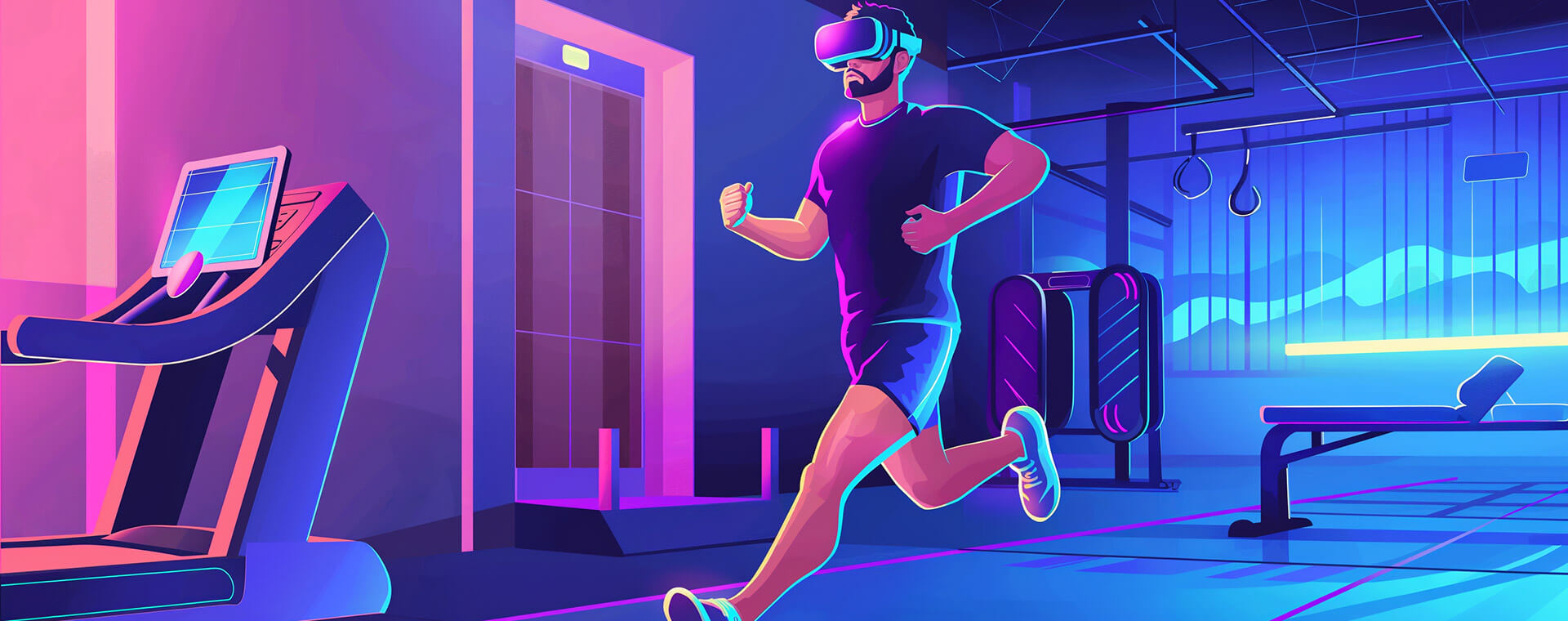
VR Fitness: Revolutionizing Workouts Through Immersive Technology
- The Rise of Virtual Reality Fitness
- What Is VR Fitness?
- Key Benefits of VR for Physical Activity
- Conclusion
Imagine turning your living room into a dance floor or an intense boxing ring—all without leaving home. Virtual reality is revolutionizing the fitness industry by transforming traditional workouts into engaging, interactive experiences that captivate users and enhance physical performance [1]. Instead of the monotonous routine of traditional gym sessions, VR workouts offer immersive exercise experiences that transport you to different environments, keeping motivation high and boredom at bay. Through immersive environments and gamified routines, VR platforms provide exercises that not only boost motivation but also target key fitness components such as balance, coordination, and endurance [1]. This innovative approach makes fitness more accessible and enjoyable for individuals of all levels, from beginners to seasoned athletes, by combining entertainment with effective physical training [1]. As a result, virtual reality is breaking down barriers to exercise, encouraging consistency, and reshaping how people approach their health and wellness goals.
The growing popularity of VR fitness is fueled by innovative fitness VR apps that cater to various fitness levels and interests [2][3]. From cycling through scenic landscapes to participating in interactive VR training sessions, these apps provide a personalized and dynamic workout experience. Additionally, the accessibility of VR technology means that more people can incorporate immersive exercise into their daily lives without the need for expensive gym memberships or equipment. Moreover, many VR platforms offer multiplayer options, allowing users to work out with friends or join virtual classes, fostering a sense of community and accountability. As technology continues to advance, the potential for VR to revolutionize fitness remains immense, promising a future where staying active is not only effective but also incredibly fun. In this article, we’ll explore how virtual reality fitness is not only transforming traditional workouts but also breaking down barriers to physical activity.
VR fitness, or virtual reality fitness, refers to games designed specifically for physical exercise rather than just entertainment [4]. These games combine the immersive experience of virtual reality technology with physical activity to create engaging and interactive workout routines [4]. Users wear a virtual reality headset that places them inside a computer-generated environment, allowing them to interact through movements and gestures [4].
Virtual Reality (VR) has emerged as a powerful tool in promoting physical activity, offering advantages that extend beyond traditional exercise. One of the key benefits of using VR for physical activity is stress reduction [1]. In today’s fast-paced society, chronic stress can severely impact both mental and physical health, increasing the risk of conditions such as cardiovascular disease, insomnia, and depression [1]. Exercise is a proven way to alleviate stress by releasing endorphins, improving mood, and lowering blood pressure [1]. While regular exercise is a well-known stress reliever—triggering the release of endorphins and improving mood—not everyone finds conventional exercise enjoyable or accessible [1]. VR provides an enjoyable alternative by offering immersive experiences such as dancing to music, exploring nature trails, or playing sports in a virtual environment [1]. These activities promote relaxation, enjoyment, and a sense of escape, helping users achieve mindfulness. A study by the University of Southern California showed that participants who exercised in a VR environment experienced significantly lower stress levels than those using traditional exercise methods, suggesting that immersion and distraction may enhance the stress-reducing effects of physical activity [1].
In addition to reducing stress, VR can also help improve balance, especially for older adults or those with conditions like stroke or Parkinson’s disease [1]. Balance naturally declines with age and can be impaired by conditions such as stroke or Parkinson’s disease [1] Balance training improves posture, coordination, and injury prevention, but traditional exercises targeting balance can also be challenging or discouraging. VR makes these exercises more accessible and enjoyable by gamifying them. Users can walk tightropes, dodge virtual obstacles, or soar through the air, transforming mundane routines into fun challenges. Feedback and guidance from VR apps can further support users in enhancing their balance skills [1]. Another significant advantage of using VR for physical activity is its ability to boost motivation and engagement. Motivation influences how often and how intensely people exercise, yet many struggle with staying committed due to boredom or lack of inspiration. VR addresses this by integrating goal-setting, rewards, progress tracking, and storytelling into the exercise experience. For example, users can take on roles as athletes or heroes navigating virtual challenges, which adds purpose and excitement to their workouts. A study from the University of Oxford revealed that participants who exercised in a VR environment featuring a zombie-apocalypse storyline reported higher motivation levels than those in traditional settings [1].
Virtual reality fitness is transforming the way people engage with exercise by making workouts more immersive, enjoyable, and accessible. By combining physical activity with interactive and gamified virtual environments, VR not only enhances motivation but also targets important fitness aspects like balance, coordination, and stress reduction. This innovative approach breaks down traditional barriers to exercise, offering personalized experiences for users of all levels while fostering community through multiplayer options. As VR technology continues to advance, it holds great promise for reshaping health and wellness routines.
Notes and References
- Siketic, D. (2025). VR and Its Benefits for Physical Activity - Takeaway Reality. https://www.takeaway-reality.com/post/vr-and-its-benefits-for-physical-activity
- New Study Proves Effectiveness of VR Workouts. (2024, June 4) - Meta. https://about.fb.com/news/2024/06/new-study-proves-effectiveness-of-vr-workouts/
- Subbs, B. (2024, January 8). How Virtual Reality Fitness (FitXR) Revolutionizes Exercise and Its Benefits - Dr Brendon Stubbs. https://www.drbrendonstubbs.com/post/how-virtual-reality-fitness-fitxr-revolutionizes-exercise-and-its-benefits
- Is Fitness Gaming the Next Wellness Trend? A Deep Dive Into VR Fitness. (n.d.) - Litesport. https://litesport.com/blog/the-ring/is-vr-good-exercise
